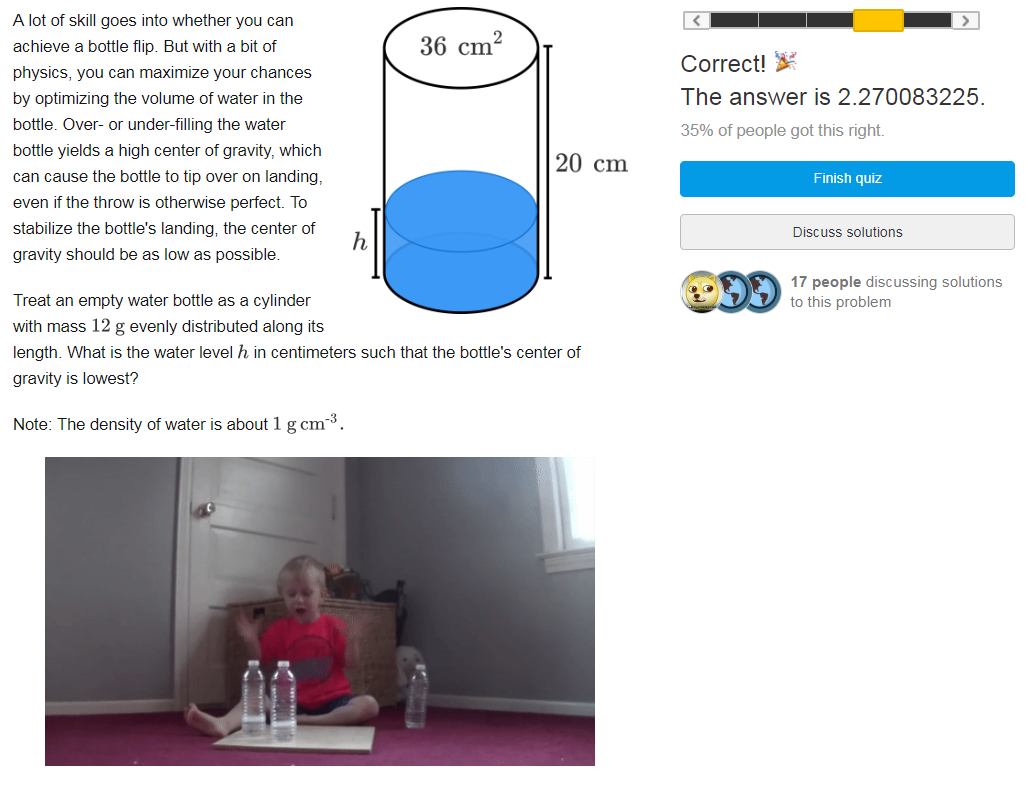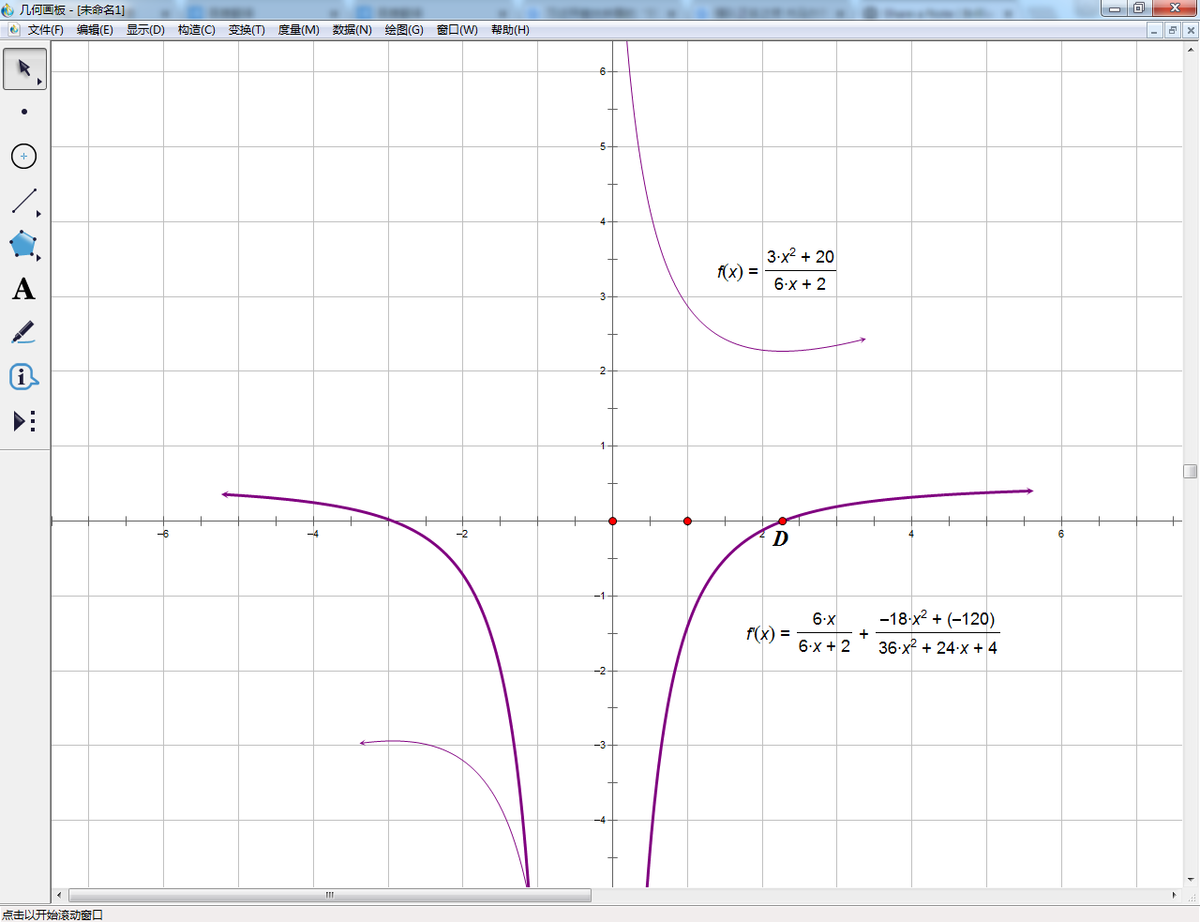Use GSP to solve problems about FUNCTION
 In order to treat with this disgusting problem on the homepage,I have tried some different methods, including a few experiment. Finally I found a really EASY way.
I first expressed the function of the height of the gravity with the parameter 'h'.
f(h)=[36h(h/2)+120]/(36h+12)=3h^2+20/(6h+2) (h≥0)
Then I expressed the derived function of f(h) (h≥0) and found out the points when the derived function is ZERO, while f(h) is at the smallest value.
In order to treat with this disgusting problem on the homepage,I have tried some different methods, including a few experiment. Finally I found a really EASY way.
I first expressed the function of the height of the gravity with the parameter 'h'.
f(h)=[36h(h/2)+120]/(36h+12)=3h^2+20/(6h+2) (h≥0)
Then I expressed the derived function of f(h) (h≥0) and found out the points when the derived function is ZERO, while f(h) is at the smallest value.
 GSP is a very interesting and professional softwere which can build geometrical graphs, even the image of a function. So I can find the position of the "SMALLEST-VALUE-POINT" quickly by searching on the visible interface.I got the answer of 2.27.Though it cannot be completely precision, It's enough for this exercise and most other applications.
GSP is a very interesting and professional softwere which can build geometrical graphs, even the image of a function. So I can find the position of the "SMALLEST-VALUE-POINT" quickly by searching on the visible interface.I got the answer of 2.27.Though it cannot be completely precision, It's enough for this exercise and most other applications.
Easy Math Editor
This discussion board is a place to discuss our Daily Challenges and the math and science related to those challenges. Explanations are more than just a solution — they should explain the steps and thinking strategies that you used to obtain the solution. Comments should further the discussion of math and science.
When posting on Brilliant:
*italics*or_italics_**bold**or__bold__paragraph 1
paragraph 2
[example link](https://brilliant.org)> This is a quote# I indented these lines # 4 spaces, and now they show # up as a code block. print "hello world"\(...\)or\[...\]to ensure proper formatting.2 \times 32^{34}a_{i-1}\frac{2}{3}\sqrt{2}\sum_{i=1}^3\sin \theta\boxed{123}Comments
同志好.